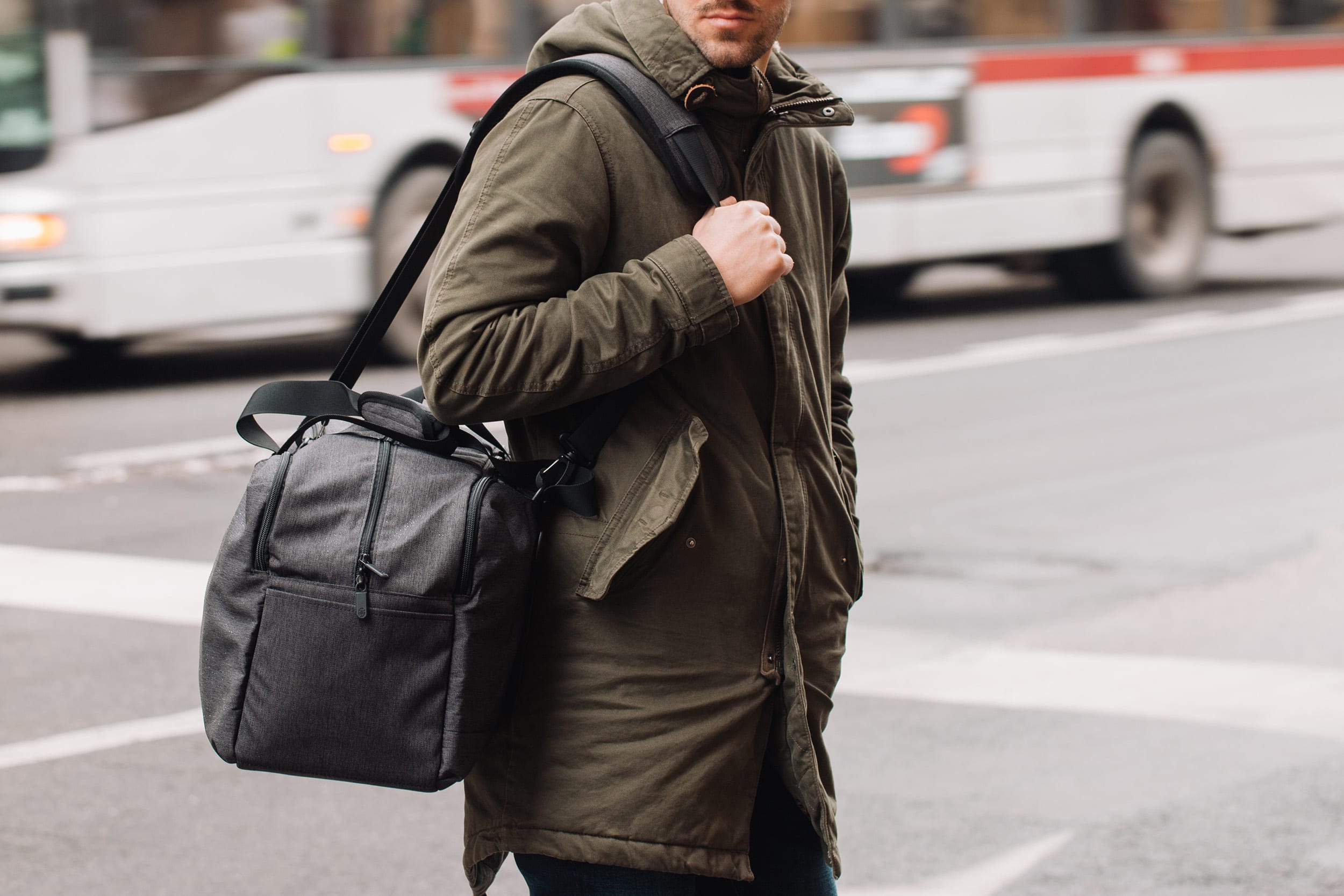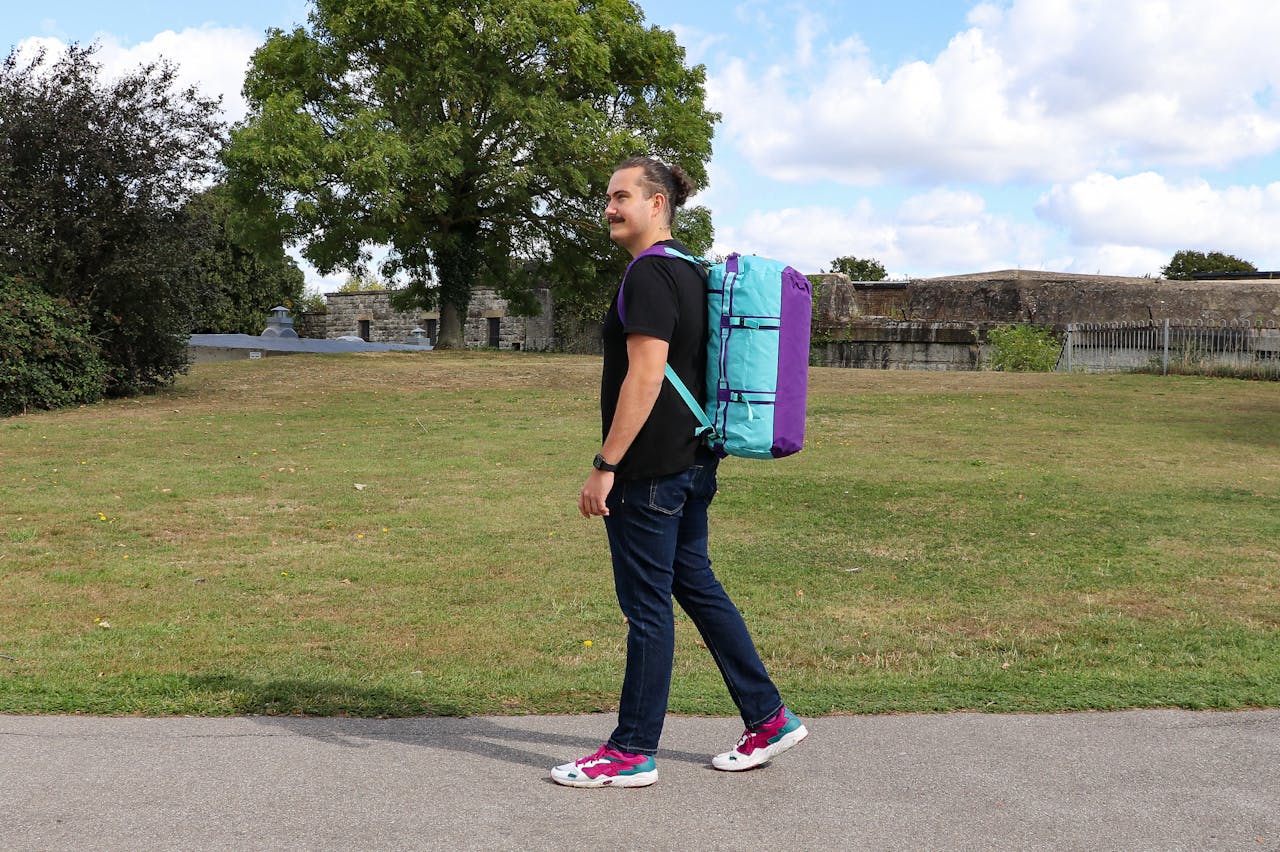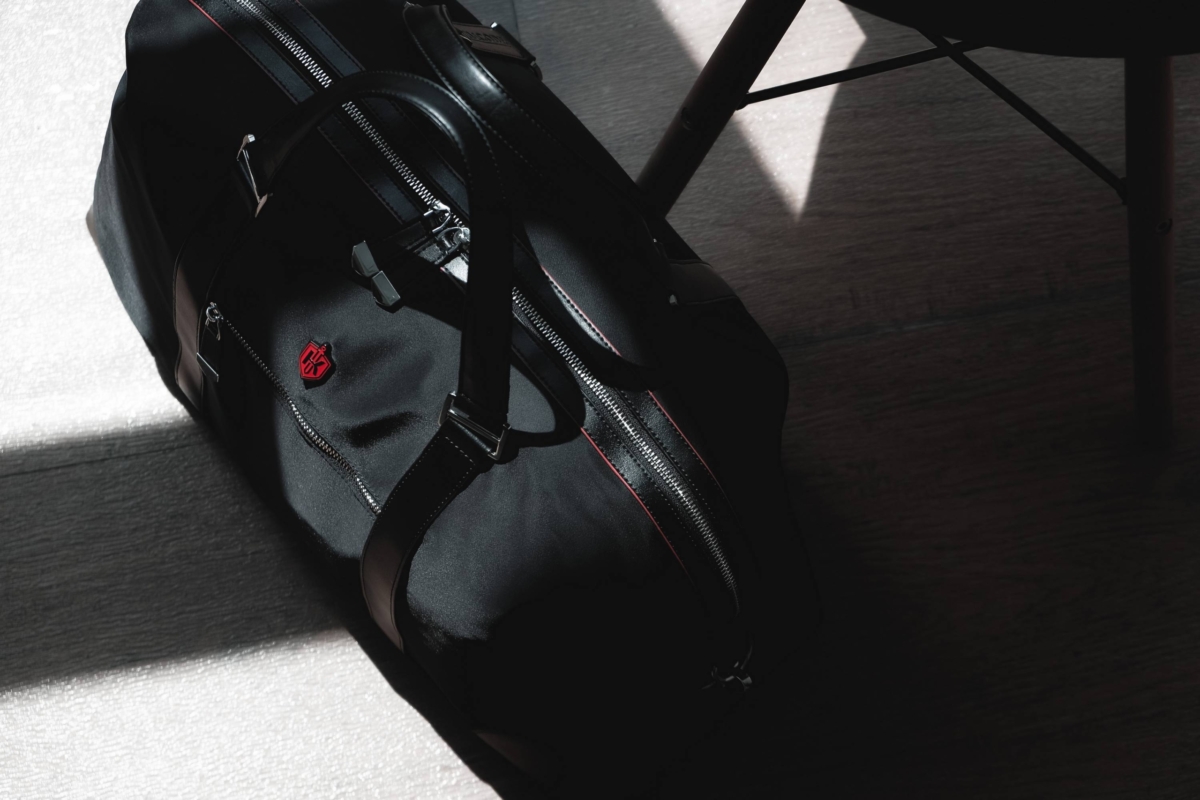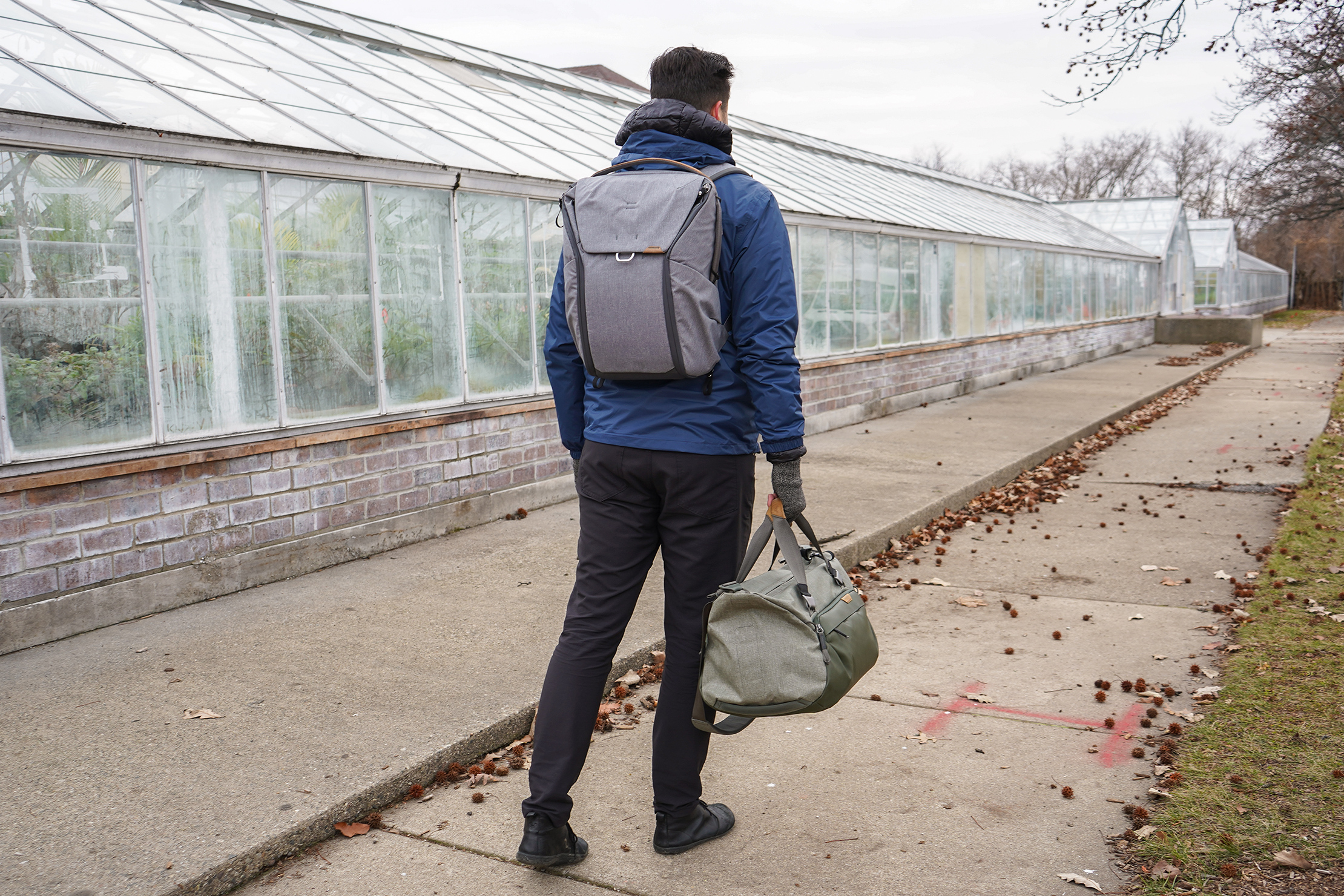:max_bytes(150000):strip_icc()/TAL-carhartt-trade-series-2-in-1-packable-duffel-with-utility-pouch-nick-kova-update-a969c063164546698db4e2c484f0bf5f.jpg)
The Ever-Present Duffel and the Puzzle of Portability
The duffel bag, a steadfast companion for countless journeys, from quick trips to the gym to more involved expeditions, owes its lasting appeal to its generous interior and adaptable nature. Its open design allows us to pack a diverse array of essentials with relative ease. Yet, this very characteristic can pose a genuine physical challenge: how does one comfortably manage a potentially weighty and shapeless bundle without ending up with a sore shoulder or an aching back? Many of us have known the awkwardness of a shifting, unbalanced duffel and the subsequent discomfort. But take heart, fellow traveler and fitness enthusiast, because discovering the knack for comfortably carrying a duffel bag is entirely within reach.
The secret to toting a duffel bag comfortably isn’t just about the bag itself; it’s deeply intertwined with the methods we employ. Ignoring sensible carrying practices can gradually lead to muscular imbalances, general discomfort, and even the unwelcome onset of injury. Picture the numerous individuals you’ve likely seen wrestling with their duffels, their posture compromised, their walk uneven. It’s a common sight, but it doesn’t have to be our reality. By grasping the fundamental principles of weight distribution and adopting effective carrying strategies, we can transform the often-tiresome task of moving a duffel into a significantly more manageable and, dare we suggest, agreeable experience.
This piece explores practical strategies and techniques crafted to enhance your duffel-carrying endeavors. We will delve into various ways to carry your bag, underscore the significance of intelligent packing, and offer guidance on selecting a duffel that aligns with your particular requirements. Our objective is to arm you with the knowledge and skills needed to comfortably and confidently navigate your travels, whether short hops or long hauls, with your dependable duffel by your side. So, let’s unravel the mysteries of comfortable duffel transport and consign those awkward, back-straining carries to the realm of past grievances.
Consider this your comprehensive guide to conquering the duffel bag conundrum. We’re aiming for more than just slinging it over a shoulder and hoping for the best outcome. Instead, we’ll approach this with an eye on how our bodies move and practical application, ensuring you can move your belongings with ease and without compromising your well-being. Prepare to bid farewell to discomfort and welcome a more comfortable and efficient way of moving through the world with your duffel.
Smart Packing: The Bedrock of Balanced Weight
Before even thinking about how to lift your duffel, the cornerstone of comfortable carrying resides in the way you organize its contents. An unevenly distributed load is a surefire recipe for discomfort, compelling your body to compensate for the imbalance. Imagine attempting to walk with weights concentrated on just one side of your body — it’s inefficient and quickly exhausting. The same logic applies to your duffel bag. Therefore, the initial step toward a comfortable carry is to thoughtfully arrange the items inside.
A generally sound principle is to position heavier items closer to the center of the bag and as near to your back as possible when you’re carrying it. This helps to maintain a more balanced weight and prevents the bag from pulling awkwardly to one side. Think about packing a suitcase; you wouldn’t simply toss everything in without a second thought. Similarly, with a duffel, take a moment to consider the weight and bulk of each item. Books, footwear, and other denser objects should ideally find their place in the middle, surrounded by lighter articles like clothing.
Furthermore, strive to spread the weight evenly along the length of the bag. Avoid creating noticeable bulges or concentrations of weight at either end. This will contribute to a more uniform shape and prevent the bag from feeling lopsided. Utilizing packing cubes or smaller bags within your duffel can also be beneficial for organization and weight distribution. These can help to keep your belongings separate and prevent them from shifting excessively during movement, which can further contribute to an unbalanced load.
By investing a little time in packing your duffel with intention, you’ll significantly lessen the strain on your body when you carry it. A well-packed bag will feel more stable and less cumbersome, regardless of the carrying method you choose. This initial step is sometimes overlooked, but it’s arguably the most vital element in achieving a comfortable and pain-free duffel-carrying experience. Remember, a balanced bag often translates to a more balanced you.
Navigating the Nuances of Carrying Techniques
Once your duffel is packed with an eye toward balanced weight, the next essential consideration is adopting the most appropriate carrying technique for the situation at hand. The conventional method of slinging the strap over a single shoulder is often the quickest solution for short distances or when navigating crowded environments. However, for longer treks or heavier loads, this one-shoulder approach can impose considerable strain on the trapezius muscle and create an uneven pull on your spine. It’s the classic “one-shoulder lean” many have both witnessed and perhaps experienced firsthand.
A more body-friendly approach for heftier duffels is the cross-body carry. By positioning the strap across your torso, the weight of the bag is distributed more uniformly across your shoulder and back muscles. This method offers greater stability and reduces the direct pressure on a single point. Consider the design of a messenger bag — the underlying principle is the same. Ensure the strap is adjusted so that the bag rests comfortably against your lower back, rather than hanging low and exerting a downward pull.
For particularly heavy or bulky duffels, using both handles is often the most comfortable and stable option. Carry the bag in front of you, employing both hands to distribute the weight evenly. Maintain a straight back and lift with your legs, similar to how you would lift any heavy object. While this method might not be ideal for covering long distances or keeping your hands free, it’s excellent for short transfers, such as moving the bag in and out of a vehicle. Some duffel bags also come equipped with backpack straps, which offer the most even distribution of weight and are ideal for longer walks or navigating airports. If your duffel has this feature, don’t hesitate to make use of it!
Experiment with these various carrying techniques to discover what suits you best and the specific circumstances. Take into account the weight of your bag, the distance you need to carry it, and any potential obstacles you might encounter. Being adaptable and switching between carrying methods can also help to prevent fatigue and discomfort. Remember, the objective is to distribute the load effectively and minimize strain on any single part of your body. So, embrace the versatility of your duffel and its array of carrying possibilities!
The Impact of Duffel Bag Features and Wise Selection
While carrying techniques are undeniably important, the design and features of your duffel bag also contribute significantly to your overall comfort. Not all duffel bags are created equal, and investing in one with well-thought-out design elements can make a noticeable difference. Consider the material, the quality of the straps and handles, and any additional features that might improve your carrying experience. A thin strap that digs into your shoulder or poorly positioned handles can quickly undermine even the most conscientious carrying methods.
Look for duffel bags that feature padded shoulder straps. A wider, padded strap will spread pressure more evenly across your shoulder, reducing the likelihood of discomfort. Adjustable straps are also crucial, allowing you to customize the length to fit your body and preferred carrying style. Sturdy and well-stitched handles are essential for comfortable hand-carrying, particularly for heavier loads. Consider bags with multiple handle options, such as side handles, which can offer alternative carrying positions and help to distribute the weight in different ways.
The size and shape of the duffel bag should also be considered in relation to how you typically use it. A larger bag might offer more packing capacity, but it can also become unwieldy and difficult to carry comfortably when fully loaded. Think about the typical weight and volume of items you’ll be carrying and choose a bag that meets those needs without being excessively large. Features like internal compartments and external pockets can also aid in organization and weight distribution, preventing items from shifting around excessively.
Ultimately, selecting the right duffel bag is an investment in your comfort and convenience. Take the time to explore different options and consider your specific needs and preferences. A well-designed and appropriately sized duffel bag, combined with proper packing and carrying techniques, will transform your travel and transport experiences from a potential source of discomfort into a smooth and manageable part of your journey. Don’t underestimate the influence of a quality bag on how comfortable you are while carrying it!
Practical Pointers for Added Ease
Beyond smart packing and varied carrying techniques, several additional suggestions can further enhance your comfort when carrying a duffel bag. One often-overlooked element is how you hold yourself. Regardless of your chosen carrying method, maintaining good posture is key to minimizing strain on your back and shoulders. Stand upright, keep your shoulders relaxed and back, and engage the muscles in your core. Avoid hunching over or leaning excessively to one side to compensate for the bag’s weight. Imagine yourself as a balanced column, supporting the load with your entire body structure.
Take regular breaks, especially when carrying a heavy duffel over longer distances. Even brief pauses to adjust your grip or switch how you’re carrying the bag can help to alleviate muscle fatigue. If the option is available, make use of luggage carts or other forms of assistance, particularly in places like airports or train stations. There’s no shame in utilizing available resources to make your journey more comfortable. Remember, the goal is to move your belongings efficiently and without unnecessary physical stress.
Pay attention to what your body is telling you. If you begin to feel pain or discomfort, adjust your carrying method or take a moment to rest. Ignoring early warning signs can lead to more significant problems down the line. Avoid attempting to carry more weight than you can comfortably handle. If your duffel is consistently overloaded, consider using a larger suitcase with wheels or distributing your belongings into several smaller bags. Sometimes, carrying less truly contributes to greater ease when traveling.
Finally, practice makes a difference. The more consciously you apply these techniques and suggestions, the more natural and comfortable carrying your duffel bag will become. Notice how different carrying methods feel on your body and make adjustments as needed. With a bit of awareness and effort, you can transform the often-dreaded task of carrying a duffel into a much more manageable and, yes, even a somewhat agreeable experience. So, proceed and manage those duffels with a newfound sense of confidence and comfort!
Frequently Asked Questions
Q: My duffel bag always feels like it’s pulling heavily on one shoulder. What could be the reason?
A: It’s likely that you’re relying on the single-shoulder carry for too long or with a load that isn’t balanced effectively. Try switching to the cross-body method to distribute the weight more evenly across your torso. Also, take a look at how you’ve packed your bag. Make sure heavier items are positioned in the center and as close as possible to where the bag rests against your body. An imbalanced load will invariably feel heavier on one side.
Q: My duffel doesn’t have straps for carrying it like a backpack. Are there other ways to carry it comfortably over longer distances?
A: While backpack straps are certainly ideal for longer distances, you can still manage without them. The cross-body carry is a good alternative. If possible, ensure the strap is wide and has some padding. Taking frequent breaks and alternating the shoulder you carry the bag on can also provide relief. For very long stretches in places like airports, consider utilizing a luggage cart if one is available. Your body will appreciate it!
Q: How can I stop the shoulder strap from digging uncomfortably into my shoulder?
A: Seek out duffel bags that have wider, padded shoulder straps. If the strap on your current bag is causing discomfort, you can purchase a separate shoulder pad that attaches to the strap. Adjusting the length of the strap so the bag sits higher on your back can also help to alleviate pressure. Experiment with slightly different strap positions to find what feels most comfortable and distributes the weight most effectively.

How To Pack A Duffle Bag As Your Only Piece Of Luggage

Best Duffle Bag How To Pick In 2021 Pack Hacker

Top 5 Best Carry On Duffel Bags For Your Next Trip! Geartacular
![20 best carryon duffel bags for travel [2024 guide] 20 best carryon duffel bags for travel [2024 guide]](https://travelfreak.com/wp-content/uploads/2020/02/carry-on-duffel-bag.jpg)
20 Best Carryon Duffel Bags For Travel [2024 Guide]


Best Duffle Bag How To Pick In 2024 Pack Hacker
Originally posted 2025-04-10 08:05:11.